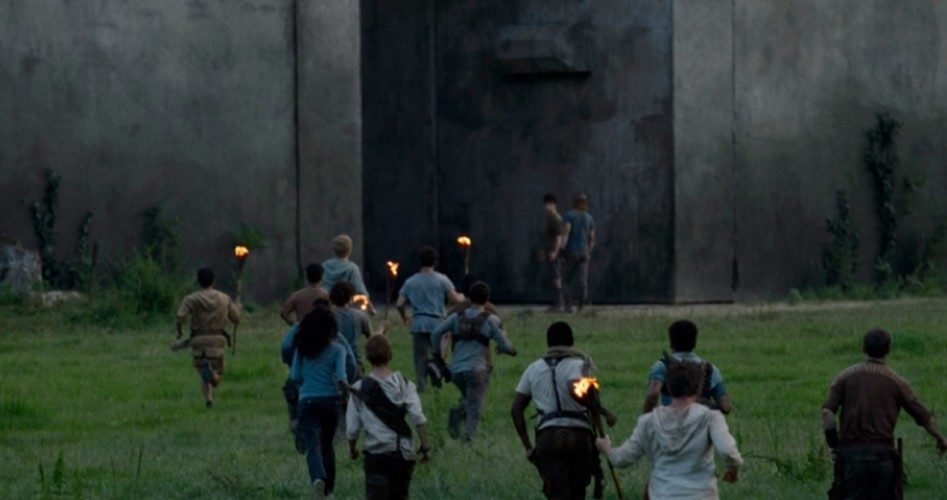
A maze is defined as “a network of paths and hedges designed as a puzzle through which one has to find a way.” But The Maze Runner never finds its way.
The Maze Runner is the first of what are likely to be several movies based upon the book trilogy by James Dashner.
The basic plot of Dashner’s post-apocalyptic dystopia is: Teenager Thomas (Dylan O’Brien) wakes up remembering nothing in a Lord of the Flies-style oasis called the “Glade.” The Glade is enclosed by unbreachable mechanical walls, with the exception of a pathway in the walls that opens up every day and closes every night. No one, we are told, who remains in the “maze” after the doors close at night ever lives because of mysterious monsters called “grievers.”
After Thomas is brought into the Glade through an elevator that transports one new boy into the Glade every month, he befriends some of the several score teenage boys who have been living there for years. Led by the longest veteran of the maze, Alby (Aml Ameen), some of the veteran boys run (i.e., the “runners”) through the maze during the day seeking a way out. Thomas also tangles with the superstitious Gally (Will Poulter), a wooden character who represents the dullard neighborhood bully in every American town. Thomas — unlike Gally and virtually every other boy in the enclosure — has the curiosity and gumption to find out why the boys have been put into the Glade. Eventually, the first girl — Teresa (Kaya Scodelario) — is transported into the Glade with an ominous note that “She’s the last one ever.”
Early reviews of the film have been mostly positive, so it’s possible that the disappointment of this sci-fi fan is the aberration rather than the rule. I confess that I haven’t read Dashner’s books, and therefore may have been at a disadvantage on the plot line. It’s likely fans of this young adult novel series would be able to fill in the gaping plot holes that are never patched together by Director Wes Ball. The actual maze in this film is the quest to find a plot the viewer cares about.
The fault of the movie is not the acting, as O’Brien and Ameen put in quality performances. Even the stoic “runner” Minho (Ki Hong Lee) — who is tasked with displaying the emotional range of Arnold Schwarzenegger in the Terminator series — astonishingly portrays a likable character.
There’s no danger of giving up the plot line in this film with this review, as the directors keep that to themselves all the way to the end. The end of the movie is designed to be — I think — reminiscent of the end of a Resident Evil series movie under the Umbrella corporation, though without the monsters, or the superpowers and good looks of Milla Jovovich. Sure, The Maze Runner has the feared “grievers,” the part-monster, part-mechanized minotaurs of this labyrinth that look like cutting-room floor CAD outlines for the spider in the Lord of the Rings trilogy. But the movie never gives even the slightest hint as to where they come from or why they were created. Nor do the directors tell us why they have created the “maze,” other than some vague references to training a new generation of kids for some undisclosed nefarious plan.
Yawn.
Hey, if I’m going to shell out good money for a movie, I want some kind of conclusion. For me, this was not some kind of leave-me-hanging ending like The Empire Strikes Back where I actually wanted to see the next movie to see how it would turn out. The Maze Runner was more like watching the first installment of the Twilight movies, which left me wondering what all the fuss was about and concluding I’d not even bother to watch the sequels when they were on free television.
If you run through this maze to the final credits, don’t expect to escape with any answers. The only answer you’ll find is you surrendered up $10.50 for your ticket. The only persons who can expect to find their way through this maze are the Director Wes Ball and his screenwriters, who will likely find a way to split the third movie in the trilogy into two parts in order to maximize the box office take from undiscriminating moviegoers.



